Bleach cleaning hacks – who knew these three little words could unlock a world of sparkling clean possibilities? I’m always on the lookout for ways to simplify my cleaning routine and save a few bucks, and let me tell you, bleach is a powerhouse hiding in plain sight! For generations, bleach has been a staple in households worldwide, valued for its disinfecting and whitening properties. From ancient civilizations using rudimentary forms of chlorine for sanitation to its modern-day applications, bleach has a rich history of keeping our spaces clean and healthy.
But let’s be honest, most of us only think of bleach when tackling laundry stains or disinfecting the bathroom. What if I told you there’s a whole arsenal of bleach cleaning hacks that can make your life easier and your home cleaner than ever before? In this article, I’m going to share some of my favorite DIY tricks using bleach that go beyond the basics. We’ll explore clever ways to remove stubborn stains, freshen up household items, and even tackle some unexpected cleaning challenges. So, grab your gloves and let’s dive into the world of bleach cleaning hacks – you’ll be amazed at what this simple solution can do!
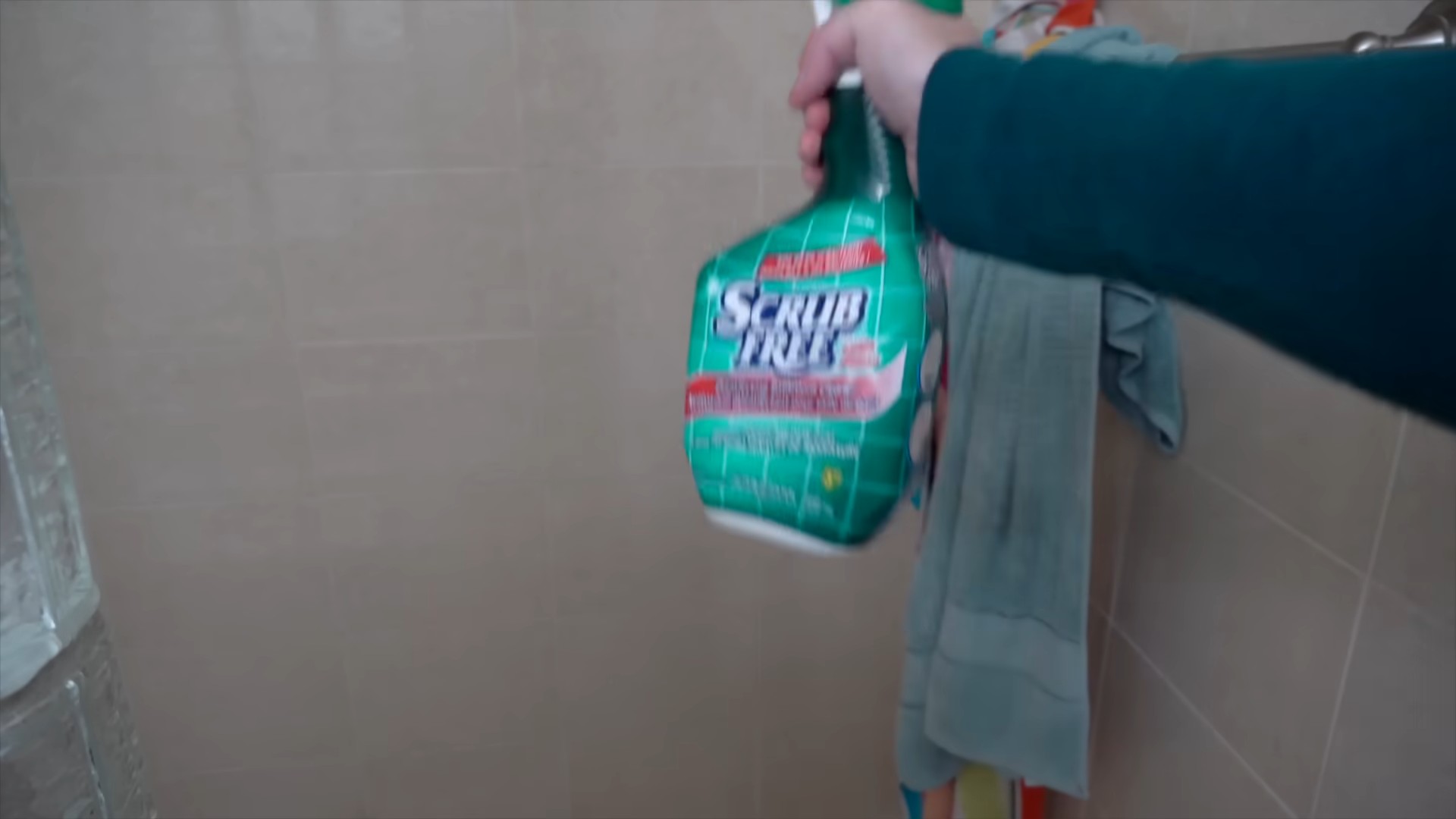
DIY Bleach Cleaning Hacks: Making Your Home Sparkle!
Hey everyone! I’m always on the lookout for ways to make cleaning easier and more effective. Bleach, when used safely and correctly, can be a real powerhouse in your cleaning arsenal. I’ve compiled some of my favorite bleach cleaning hacks that I’ve personally tried and tested. Remember, safety first! Always wear gloves and eye protection, and ensure proper ventilation when working with bleach. Never mix bleach with ammonia or other cleaning products, as this can create dangerous fumes.
Understanding Bleach Basics
Before we dive into the hacks, let’s quickly cover some bleach basics. Regular household bleach is typically a 5-6% sodium hypochlorite solution. It’s a powerful disinfectant and stain remover, but it’s also corrosive. That’s why dilution is key! Always dilute bleach with water according to the instructions below or on the product label.
Hack 1: Whitening Dingy White Laundry
Is your white laundry looking a little…blah? Bleach can bring back that crisp, clean white.
What You’ll Need:
* Bleach (follow the instructions on the bottle for the correct amount)
* Laundry detergent
* Washing machine
* Gloves
Step-by-Step Instructions:
1. Sort Your Laundry: Separate your whites from your colors. Bleach will ruin colored fabrics, so this is crucial!
2. Pre-Treat Stains: For stubborn stains, pre-treat them with a stain remover before washing. This will give the bleach a better chance of working its magic.
3. Add Laundry Detergent: Pour your regular laundry detergent into the washing machine dispenser.
4. Add Bleach: Carefully pour the recommended amount of bleach into the bleach dispenser. If your machine doesn’t have a dispenser, dilute the bleach with a quart of water and add it to the wash cycle 5 minutes after the cycle has started. Never pour undiluted bleach directly onto your clothes!
5. Wash as Usual: Select the appropriate wash cycle for your whites and let the machine do its thing.
6. Dry Your Clothes: Once the wash cycle is complete, dry your clothes as usual. Check to make sure the stains are gone before putting them in the dryer, as the heat can set any remaining stains. If stains persist, repeat the process.
Hack 2: Disinfecting Cutting Boards
Cutting boards can harbor bacteria, especially after cutting raw meat or poultry. Bleach is an effective way to disinfect them.
What You’ll Need:
* Bleach
* Water
* Spray bottle (optional)
* Gloves
* Clean cloth or sponge
Step-by-Step Instructions:
1. Wash the Cutting Board: Thoroughly wash the cutting board with soap and hot water to remove any food particles.
2. Prepare the Bleach Solution: Mix 1 tablespoon of bleach with 1 gallon of water. This creates a safe and effective disinfecting solution.
3. Apply the Solution: You can either pour the bleach solution directly onto the cutting board or spray it on using a spray bottle. Make sure to cover the entire surface of the cutting board.
4. Let it Sit: Allow the bleach solution to sit on the cutting board for at least 2 minutes to effectively kill bacteria.
5. Rinse Thoroughly: Rinse the cutting board thoroughly with hot water to remove all traces of bleach.
6. Air Dry: Allow the cutting board to air dry completely before using it again.
Hack 3: Cleaning and Whitening Grout
Grout can get grimy and discolored over time. Bleach can help restore its original brightness.
What You’ll Need:
* Bleach
* Water
* Old toothbrush or grout brush
* Gloves
* Eye protection
* Spray bottle (optional)
Step-by-Step Instructions:
1. Ventilate the Area: Open windows and doors to ensure proper ventilation.
2. Prepare the Bleach Solution: Mix equal parts bleach and water in a spray bottle or bowl.
3. Apply the Solution: Spray or pour the bleach solution onto the grout lines.
4. Let it Sit: Allow the solution to sit for 5-10 minutes. Don’t let it dry completely.
5. Scrub the Grout: Use an old toothbrush or grout brush to scrub the grout lines. You should see the grime and discoloration lifting away.
6. Rinse Thoroughly: Rinse the area thoroughly with water to remove all traces of bleach.
7. Dry the Area: Wipe the area dry with a clean cloth.
Hack 4: Removing Mildew from Shower Curtains
Mildew loves damp environments, and shower curtains are prime targets. Bleach can help get rid of that unsightly mildew.
What You’ll Need:
* Bleach
* Laundry detergent
* Washing machine
* Gloves
Step-by-Step Instructions:
1. Remove the Shower Curtain: Take down your shower curtain or liner.
2. Wash with Towels: Place the shower curtain in the washing machine along with a few old towels. The towels will help scrub the curtain during the wash cycle.
3. Add Laundry Detergent: Add your regular laundry detergent to the dispenser.
4. Add Bleach: Add ½ cup of bleach to the bleach dispenser.
5. Wash on Gentle Cycle: Wash the shower curtain on a gentle cycle with cold water.
6. Hang to Dry: Hang the shower curtain to dry. Do not put it in the dryer! The heat can damage the curtain.
Hack 5: Cleaning and Disinfecting Toilets
Bleach is a classic for cleaning and disinfecting toilets.
What You’ll Need:
* Bleach
* Toilet bowl cleaner (optional)
* Toilet brush
* Gloves
Step-by-Step Instructions:
1. Flush the Toilet: Flush the toilet to clear the bowl.
2. Pour in Bleach: Pour about 1 cup of bleach directly into the toilet bowl.
3. Let it Sit: Let the bleach sit for at least 10 minutes to disinfect and remove stains. For tougher stains, you can let it sit longer, even overnight.
4. Scrub the Bowl: Use a toilet brush to scrub the entire bowl, paying attention to any stains or buildup.
5. Flush Again: Flush the toilet to rinse away the bleach and any loosened debris.
6. Clean the Exterior: For the exterior of the toilet, dilute bleach with water (1 tablespoon per gallon) and wipe down the surfaces with a clean cloth.
Hack 6: Sanitizing Sponges
Sponges can quickly become breeding grounds for bacteria. Bleach can help sanitize them.
What You’ll Need:
* Bleach
* Water
* Bowl or sink
* Gloves
Step-by-Step Instructions:
1. Prepare the Bleach Solution: Mix ¾ teaspoon of bleach with 1 quart of water.
2. Soak the Sponge: Submerge the sponge in the bleach solution and let it soak for 5 minutes.
3. Rinse Thoroughly: Rinse the sponge thoroughly with water until all traces of bleach are gone.
4. Wring Out Excess Water: Wring out as much water as possible from the sponge.
5. Air Dry: Allow the sponge to air dry completely.
Hack 7: Removing Stains from Plastic Food Containers
Those plastic food containers can get stained easily, especially from tomato-based sauces. Bleach can help remove those stubborn stains.
What You’ll Need:
* Bleach
* Water
* Gloves
Step-by-Step Instructions:
1. Prepare the Bleach Solution: Mix 1 tablespoon of bleach with 1 quart of water.
2. Soak the Containers: Fill the stained plastic containers with the bleach solution.
3. Let it Sit: Let the containers soak for 30 minutes to 1 hour, or until the stains disappear.
4. Rinse Thoroughly: Rinse the containers thoroughly with hot water and soap to remove all traces of bleach.
5. Air Dry: Allow the containers to air dry completely.
Hack 8: Cleaning Outdoor Furniture
Bleach can be used to clean and disinfect outdoor furniture, removing mold, mildew, and dirt.
What You’ll Need:
* Bleach
* Water
* Bucket
* Scrub brush
* Garden hose
* Gloves
* Eye protection
Step-by-Step Instructions:
1
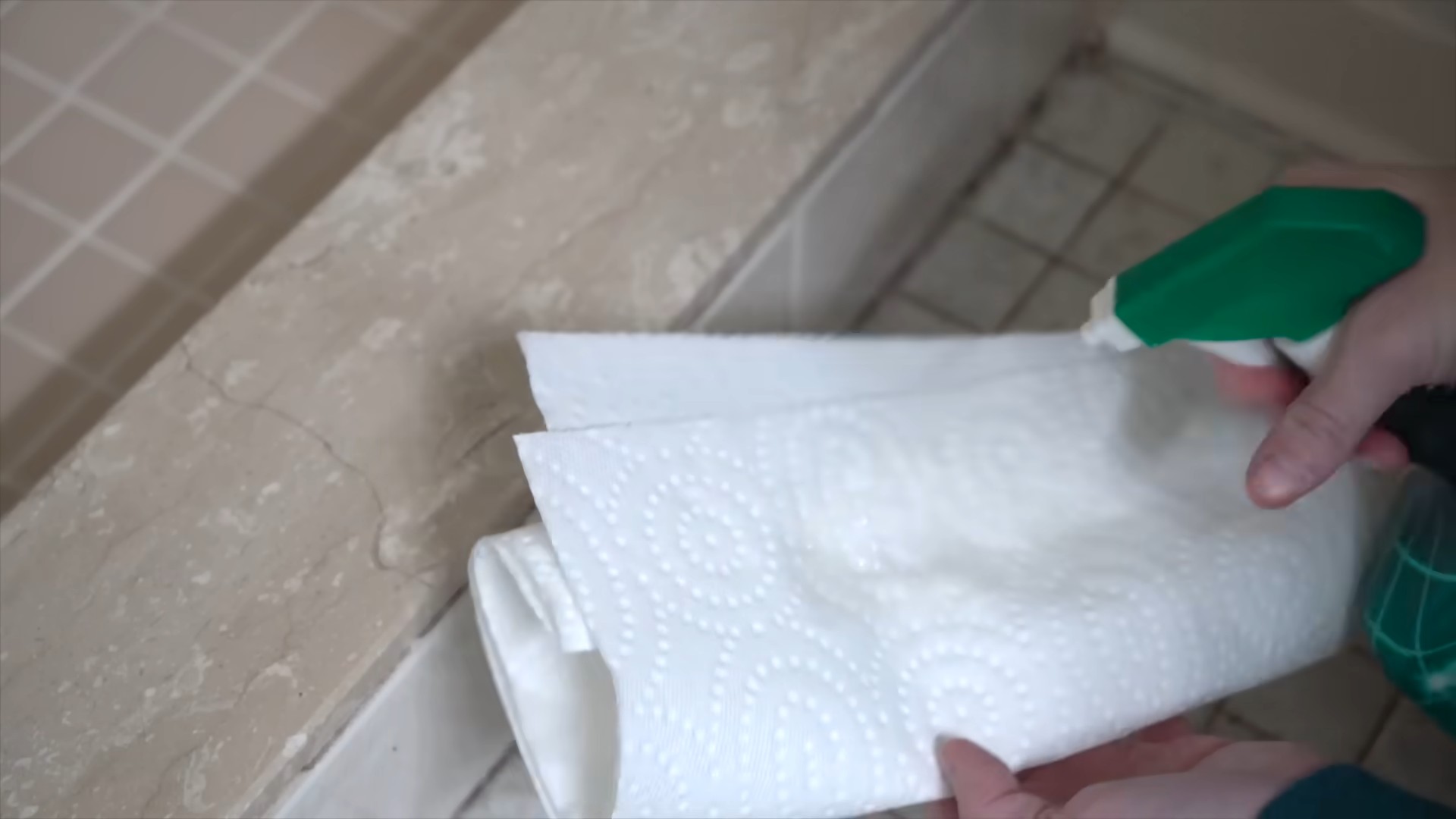
Conclusion
So, there you have it! These bleach cleaning hacks are not just about saving money; they’re about reclaiming control over the cleanliness and hygiene of your home with a powerful, readily available resource. We’ve explored how to tackle everything from stubborn bathroom stains to dingy laundry, all with the strategic use of bleach.
But why is this DIY approach a must-try? Because it’s effective, economical, and empowering. Store-bought cleaners often come with a hefty price tag and a long list of ingredients you can’t even pronounce. With these bleach cleaning hacks, you know exactly what you’re using and can adjust the concentration to suit your specific needs. Plus, the satisfaction of transforming a grimy surface into a sparkling one using your own ingenuity is truly rewarding.
Beyond the Basics: Variations and Suggestions
Don’t be afraid to experiment and adapt these hacks to your unique situation. Here are a few ideas to get you started:
* Scent Sensations: While bleach itself doesn’t have a pleasant aroma, you can add a few drops of your favorite essential oil (like lemon or eucalyptus) to your cleaning solution to mask the odor. Just be sure to test it in an inconspicuous area first to ensure it doesn’t react negatively with the bleach.
* Targeted Treatment: For particularly stubborn stains, create a bleach paste by mixing bleach with baking soda. Apply the paste directly to the stain, let it sit for a few minutes, and then scrub gently.
* Color Considerations: Always test bleach solutions on a hidden area of colored fabrics or surfaces before applying them to the entire area. Bleach can cause discoloration, so caution is key.
* Outdoor Oasis: Extend the power of bleach cleaning hacks to your outdoor spaces. Use a diluted bleach solution to clean patio furniture, decks, and even concrete surfaces. This can help remove mold, mildew, and algae, leaving your outdoor areas looking fresh and inviting.
* Mold and Mildew Mastery: Bleach is a powerful weapon against mold and mildew. For affected areas, create a solution of one part bleach to ten parts water. Spray the solution onto the mold or mildew, let it sit for 10-15 minutes, and then scrub thoroughly. Be sure to ventilate the area well during and after cleaning.
We understand that working with bleach requires caution. Always wear gloves and eye protection, and never mix bleach with ammonia or other cleaning products, as this can create dangerous fumes. Proper ventilation is also crucial.
Now, it’s your turn! We encourage you to try these bleach cleaning hacks and experience the difference for yourself. From revitalizing your grout to brightening your whites, the possibilities are endless.
Share Your Success Stories!
We’d love to hear about your experiences with these bleach cleaning hacks. Did you discover a new way to use bleach to tackle a tough cleaning challenge? Did you find a variation that worked particularly well for you? Share your tips, tricks, and success stories in the comments below. Your insights could help other readers discover the power of DIY cleaning and transform their homes. Let’s build a community of savvy cleaners who are passionate about creating clean, healthy, and happy living spaces.
Frequently Asked Questions (FAQs)
Q: Is it safe to use bleach for cleaning?
A: Yes, bleach can be used safely for cleaning when used properly. Always dilute bleach with water according to the instructions provided on the product label. Wear gloves and eye protection to prevent skin and eye irritation. Ensure adequate ventilation to avoid inhaling fumes. Never mix bleach with ammonia or other cleaning products, as this can create dangerous gases.
Q: What is the correct bleach to water ratio for general cleaning?
A: For general cleaning purposes, a common ratio is 1 part bleach to 10 parts water. This creates a diluted solution that is effective for disinfecting surfaces without being overly harsh. For specific cleaning tasks, such as removing mold or mildew, you may need a stronger solution, but always start with the recommended dilution and increase the concentration gradually if needed.
Q: Can I use bleach on all surfaces?
A: No, bleach should not be used on all surfaces. Avoid using bleach on delicate materials such as silk, wool, and leather, as it can cause damage or discoloration. Be cautious when using bleach on colored fabrics or surfaces, as it can cause fading. Always test bleach on a hidden area before applying it to the entire surface. Safe surfaces for bleach cleaning hacks generally include non-porous surfaces like tile, porcelain, and some plastics.
Q: How do I get rid of the bleach smell after cleaning?
A: To eliminate the bleach smell after cleaning, ventilate the area well by opening windows and doors. You can also use a fan to circulate the air. Another option is to wipe down the cleaned surfaces with a solution of water and vinegar or water and lemon juice. These natural solutions can help neutralize the bleach odor.
Q: Can I use bleach to clean my washing machine?
A: Yes, you can use bleach to clean your washing machine. To do so, add about a cup of bleach to the bleach dispenser and run an empty cycle on the hottest water setting. This will help remove buildup, bacteria, and odors from your washing machine. Be sure to consult your washing machine’s manual for specific instructions.
Q: How often should I use bleach for cleaning?
A: The frequency of bleach cleaning depends on your individual needs and preferences. For high-traffic areas or areas prone to germs, such as bathrooms and kitchens, you may want to use bleach more frequently, such as once a week. For other areas, you may only need to use bleach occasionally, such as once a month. Avoid overusing bleach, as it can be harsh on surfaces and potentially harmful to the environment.
Q: What are some alternatives to bleach for cleaning?
A: If you prefer not to use bleach, there are several alternatives you can use for cleaning. These include vinegar, baking soda, lemon juice, hydrogen peroxide, and essential oils. These natural cleaning agents are effective for a variety of cleaning tasks and are generally safer for the environment.
Q: How should I store bleach properly?
A: Store bleach in a cool, dry place away from direct sunlight and heat. Keep bleach out of reach of children and pets. Always store bleach in its original container and never transfer it to another container. Ensure the container is tightly sealed to prevent leaks or spills.
Q: What should I do if I accidentally get bleach on my skin or in my eyes?
A: If you accidentally get bleach on your skin, rinse the affected area immediately with plenty of water for at least 15 minutes. If you experience any irritation or redness, seek medical attention. If you get bleach in your eyes, flush your eyes immediately with plenty of water for at least 15 minutes. Seek medical attention immediately.
Q: Can I use expired bleach for cleaning?
A: While expired bleach may still be effective for some cleaning tasks, it may not be as potent as fresh bleach. Over time, bleach can degrade and lose its disinfecting properties. For best results, use bleach before its expiration date. If you choose to use expired bleach, you may need to use a higher concentration to achieve the desired cleaning effect.


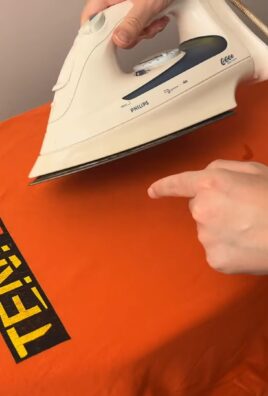
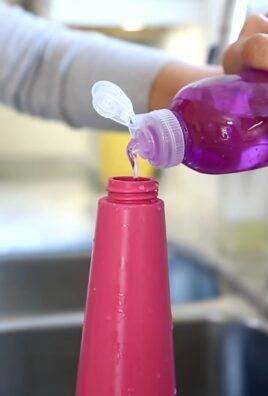
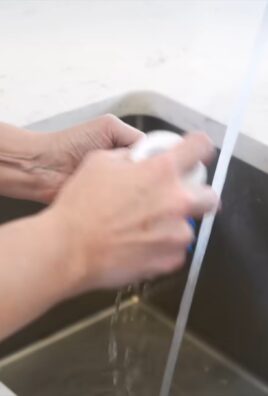
Leave a Comment